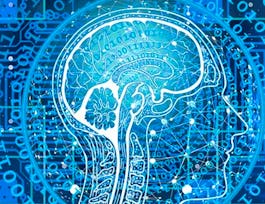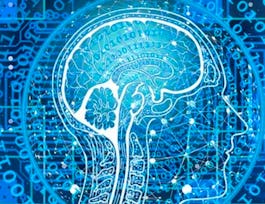This course introduces you to one of the main types of Machine Learning: Unsupervised Learning. You will learn how to find insights from data sets that do not have a target or labeled variable. You will learn several clustering and dimension reduction algorithms for unsupervised learning as well as how to select the algorithm that best suits your data. The hands-on section of this course focuses on using best practices for unsupervised learning.


Unsupervised Machine Learning
This course is part of multiple programs.
Taught in English
Some content may not be translated



Instructors: Mark J Grover
23,258 already enrolled
Included with 
Course
(233 reviews)
94%
Skills you'll gain
Details to know

Add to your LinkedIn profile
14 quizzes
Course
(233 reviews)
94%
See how employees at top companies are mastering in-demand skills

Build your subject-matter expertise
- Learn new concepts from industry experts
- Gain a foundational understanding of a subject or tool
- Develop job-relevant skills with hands-on projects
- Earn a shareable career certificate


Earn a career certificate
Add this credential to your LinkedIn profile, resume, or CV
Share it on social media and in your performance review

There are 7 modules in this course
This module introduces Unsupervised Learning and its applications. One of the most common uses of Unsupervised Learning is clustering observations using k-means. In this module, you become familiar with the theory behind this algorithm, and put it in practice in a demonstration.
What's included
11 videos2 readings3 quizzes3 app items
What's included
6 videos1 reading2 quizzes2 app items
In this module, you become familiar with some of the computational hurdles around clustering algorithms, and how different clustering implementations try to overcome them. After a brief recapitulation of common clustering algorithms, you will learn how to compare them and select the clustering technique that best suits your data.
What's included
11 videos1 reading3 quizzes3 app items
This module introduces dimensionality reduction and Principal Component Analysis, which are powerful techniques for big data, imaging, and pre-processing data.
What's included
5 videos1 reading2 quizzes4 app items
This module introduces dimensionality reduction techniques like Kernal Principal Component Analysis and multidimensional scaling. These methods are more powerful than Principal Component Analysis in many applications.
What's included
2 videos1 reading2 quizzes3 app items
This module introduces matrix factorization, which is a powerful technique for big data, text mining, and pre-processing data.
What's included
3 videos1 reading2 quizzes3 app items
Now, you have all the tools in your toolkit to highlight your Unsupervised Learning abilities in your final project.
What's included
1 peer review
Instructors



Offered by
Recommended if you're interested in Machine Learning
Why people choose Coursera for their career




Learner reviews
Showing 3 of 233
233 reviews
- 5 stars
77.25%
- 4 stars
16.30%
- 3 stars
3%
- 2 stars
1.28%
- 1 star
2.14%
New to Machine Learning? Start here.

Open new doors with Coursera Plus
Unlimited access to 7,000+ world-class courses, hands-on projects, and job-ready certificate programs - all included in your subscription
Advance your career with an online degree
Earn a degree from world-class universities - 100% online
Join over 3,400 global companies that choose Coursera for Business
Upskill your employees to excel in the digital economy
Frequently asked questions
Access to lectures and assignments depends on your type of enrollment. If you take a course in audit mode, you will be able to see most course materials for free. To access graded assignments and to earn a Certificate, you will need to purchase the Certificate experience, during or after your audit. If you don't see the audit option:
The course may not offer an audit option. You can try a Free Trial instead, or apply for Financial Aid.
The course may offer 'Full Course, No Certificate' instead. This option lets you see all course materials, submit required assessments, and get a final grade. This also means that you will not be able to purchase a Certificate experience.
When you enroll in the course, you get access to all of the courses in the Certificate, and you earn a certificate when you complete the work. Your electronic Certificate will be added to your Accomplishments page - from there, you can print your Certificate or add it to your LinkedIn profile. If you only want to read and view the course content, you can audit the course for free.
If you subscribed, you get a 7-day free trial during which you can cancel at no penalty. After that, we don’t give refunds, but you can cancel your subscription at any time. See our full refund policy.






